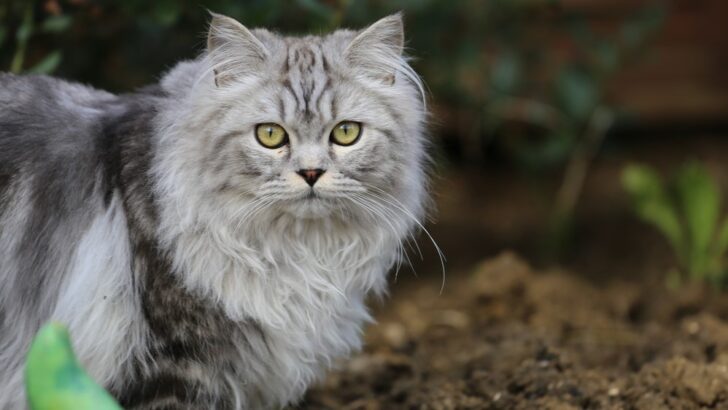A Persian cat is the most popular pedigree cat breed in the US, but these flat-faced felines appeared thousands and thousands of years ago around the deserts of Persia and Iran. Scruffy, rugged, and round, these beautiful beasts make for the purrfect, purring pillow warmer.
We’ve all heard of Persian cats, right? With smooshed noses, chubby cheeks, round, robust bodies, and long, luscious coats, we’re not surprised that Persians are the most accepted, acknowledged breed out there. Americans are obsessed with them, but the breed enjoys similar popularity in Europe, too.
Whether you’re on the hunt for a fashionable feline to grow your social media following or a cute, cuddly creature to spend your Friday nights with, you can’t go wrong with a Persian. They’re adorable, affectionate, and appreciative, and they’re guaranteed to attract attention everywhere you go.
Persians are smaller than a Maine Coon you’d get from a reputable breeder but bigger than a regular moggie you’d rescue off the street. With a Persian cat, you can count on a bundle of cuddles you can pick up, carry around the apartment, and place on your lap when you’re binging your favorite Netflix show.
We can’t forget that Persians are versatile and that you get to choose between a wide variety of colors and color combinations. Between black, white, brown, silver, golden, smoke, shaded, tabby, tortie, and more, it’s safe to say that Persians come in almost every color and pattern imaginable.
Persians are as sweet as they are stylish and there’s much more to them than meets the eye. They are known to get along with humans, cats, and dogs, and they’re more than happy to be a part of a big family with plenty of family members. Let’s explore the breed together.
The history of the Persian cat
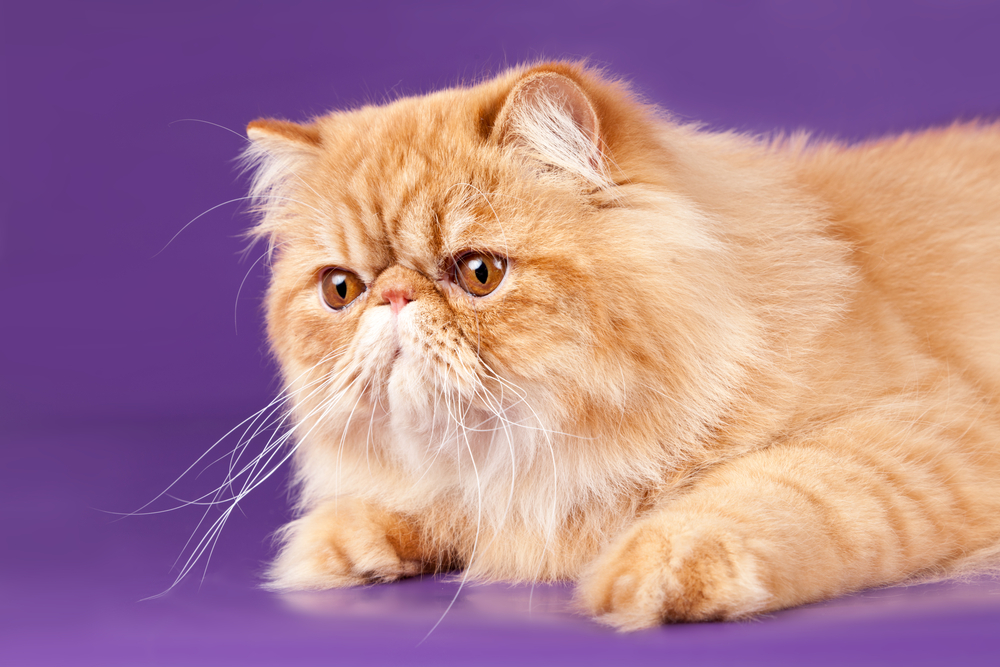
Persians are a sight for sore eyes, but one of the reasons they’re so sought-after might be that they’re surrounded by mystery – nobody knows when the Persian cat first came to be.
Written history suggests that the first Persian cat appeared around the 1500s, but there’s reason to believe that they’re much, much older than that. Historians managed to trace a cat that resembles the Persian back to ancient hieroglyphs found in the region.
The ancient hieroglyphs in question depict a longhaired cat that might have been the ancestor to what became today’s Persian cat breed.
The traditional Persian cats didn’t have the same features as today’s ones, which explains why the longhaired cat depicted in the ancient hieroglyphs didn’t come with a flat face or a bulbous body. We, however, don’t know whether these theories are true.
Going on to the 1600s, there are documents and records of exotic cats with long, luscious coats getting smuggled from Persia to Europe. By the 1800s, Persian cats reached Britain and were exhibited at the Crystal Palace cat show, the very first cat show that took place in London in 1871.
But that’s not where the story ends. Queen Victoria took particular interest in the breed and might have been the one responsible for it becoming one of the most popular, prominent breeds around the world. Queen Victoria became enamored with them and started collecting them.
She owned a couple of Persian cats, but the most famous one, White Heather, remained at Buckingham Palace even after the Queen herself died. Queen Victoria talked everyone’s ears off about Persian cats, and soon the breed became popular with other royals and the upper-class British.
By the end of the 1800s, Persian cats reached the US.
What’s there to know about the Persian cat?

Persian cats were officially recognized by the Cat Fanciers’ Association (CFA) around 1906 and were one of the first few breeds registered. But by the 1950s, selective breeding started to produce Persian cats with flatter faces and rounder heads which changed the appearance of the traditional Persian cat.
The International Cat Association recognized Persian cats, too, but decided to create a different section for Persian cats with lighter coats and darker points on the face, ears, legs, and tails. Himalayan cats are seen as a separate breed within the Persian breed group by some and as Persian cats by others. The CFA, for example, sees them as Persian cats.
Now that we’ve gone above and beyond to understand the origin of the breed, we do need to unpack the characteristics that make Persians everyone’s cup of tea.
What are the dos and don’ts of caring for a Persian cat? What to expect when you get a Persian kitten? What’s the tea with grooming these fluffballs? Persian cats are high-maintenance, but that doesn’t mean that you can’t care for one without breaking the bank or quitting your career.
Persians are worth the effort and energy, and when you finally get one, you’ll understand precisely what we’re talking about. Whether you’re planning on becoming a parent to a Persian cuddler or you’ve already brought the curious creature home, we’ve got you covered.
Appearance
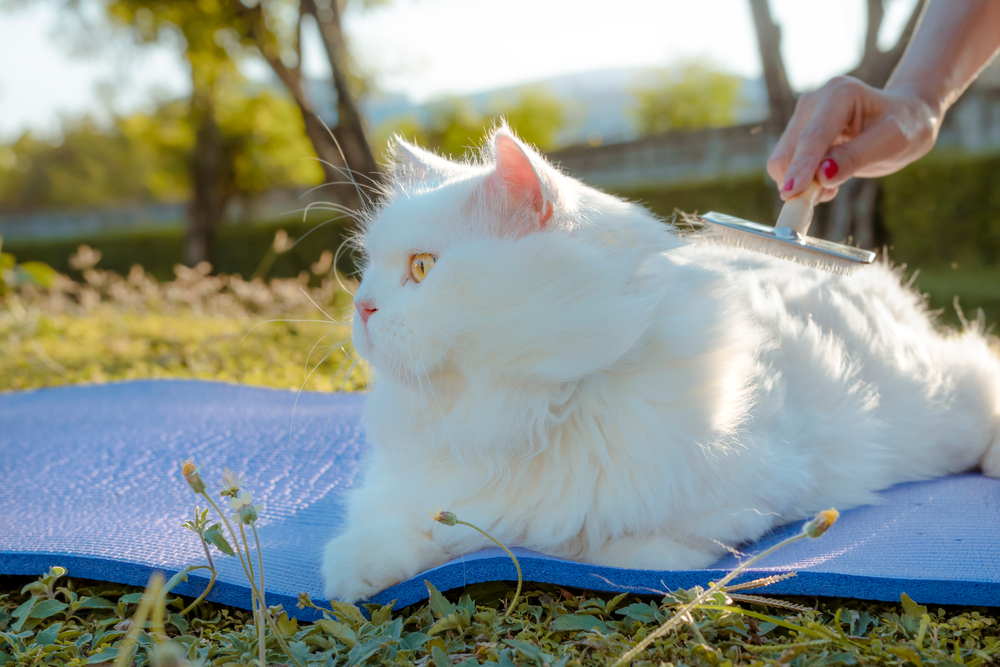
We all know what Persian cats look like, right? With fluffy fur that makes them appear ten times bigger, short, stubby legs, a cobby, rugged body, and a deep chest, these mysterious meowers attract attention everywhere they go. But we can agree that Persian cats are best known for their flat, pansy-like faces.
We mentioned beforehand that traditional Persians look different from the ones we know and adore today. What do we mean by that?
Over time, two types of Persian cats appeared on the scene – traditional ones and show ones. Traditional or doll-face Persian cats come with features that are simple, soft, and reminiscent of the first recorded documents of the breed.
Show or Peke-face Persian cats come with flatter faces, smaller ears, rounder heads and bodies, and thicker coats. Peke-face Persians were named after Pekingese dogs considering their similar appearance.
Peke-face Persians are the newer “versions” of the breed that appeared after breeders decided to play with the features that made the traditional Persians popular. But whether you’re a pet parent to a Peke-face or doll-face Persian, you can count on a few features that are typically the same.
Persian cats are medium to large-sized cats that weigh between 7 and 13 pounds and measure 10 to 15 inches tall and 14 to 18 inches long. Males are typically bigger than females, but the measurements may differ depending on nutrition, physical activity, and quality of life, too.
The most common Persian coat colors are black, blue, gray, chocolate, brown, cinnamon, cream, tan, fawn, lavender, silver, lilac, red, orange, and white. Tabby Persians are the most common pattern, but we can’t forget about solid, shaded, smoke, bi-color, calico, parti-color, and Himalayan.
Read more:
Persian Ragdoll Mix: All You Need To Know, Fur Real
Persian Siamese Mix: A Match Made In Heaven
The Battle Of Fluffy Felines: Ragdoll Vs. Persian
Personality
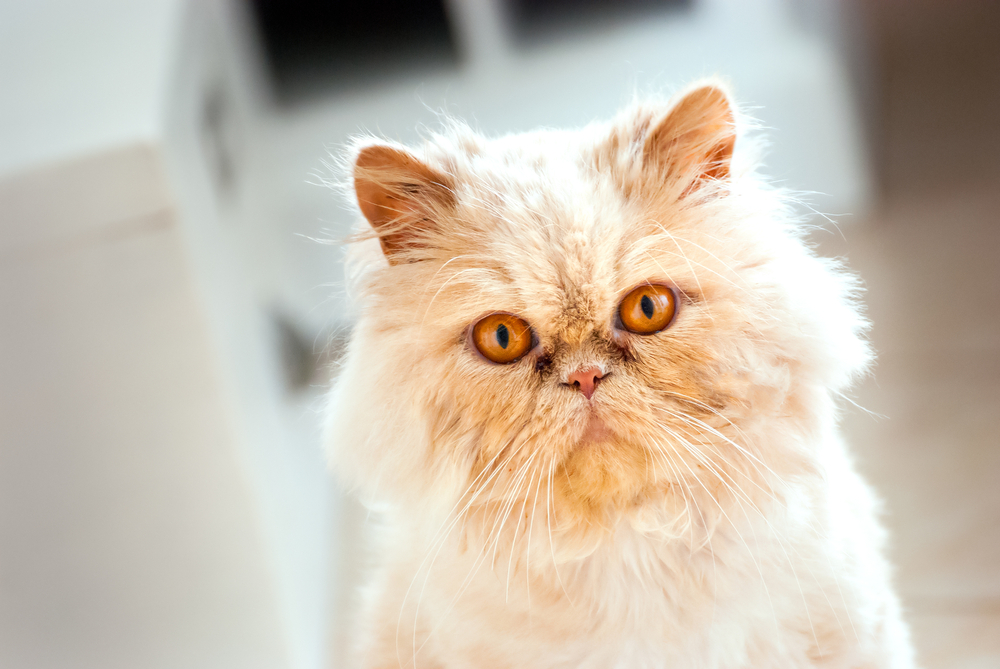
Persian cats might be high-maintenance when we’re referring to care (more on that down below), but they’re the opposite of that when we’re reminded of how sweet, simple, and subdued these beautiful beasts are. Persians are cute and cuddly, but they’re much more than that. Where do we start?
First off, Persians appreciate affection and attention, but they’re equally content to hang out with you or by themselves. Persians prefer to nap on the floor, mope around all day, move from one warm spot to the other, and observe the world through rose-colored lenses.
Persians aren’t big on refrigerators and kitchen counters. They tend to stay close to the ground, which might be something you’re on the lookout for.
Furthermore, they appreciate peace and quiet more than you’d expect. Whether you’re surrounded by cats and dogs that never stop communicating with each other or have a busy household that never sleeps, you’re going to catch your Persian napping on the comfiest cushion.
But that’s not to say that Persian cats are always meek and mellow. They can be fun and friendly or energetic and expressive, but they’re more likely to get tired of everyone’s shenanigans. They are royalty, after all – they’re above running around, knocking things down, and causing trouble.
Finally, Persian cats are the epitome of lap cats. They adore cuddling, napping on your chest, and purring the day away. Pick them up, carry them around the apartment, and pet them. Whatever you do, make sure you’re showering them with affection whenever you get the chance and you’re good to go.
Care
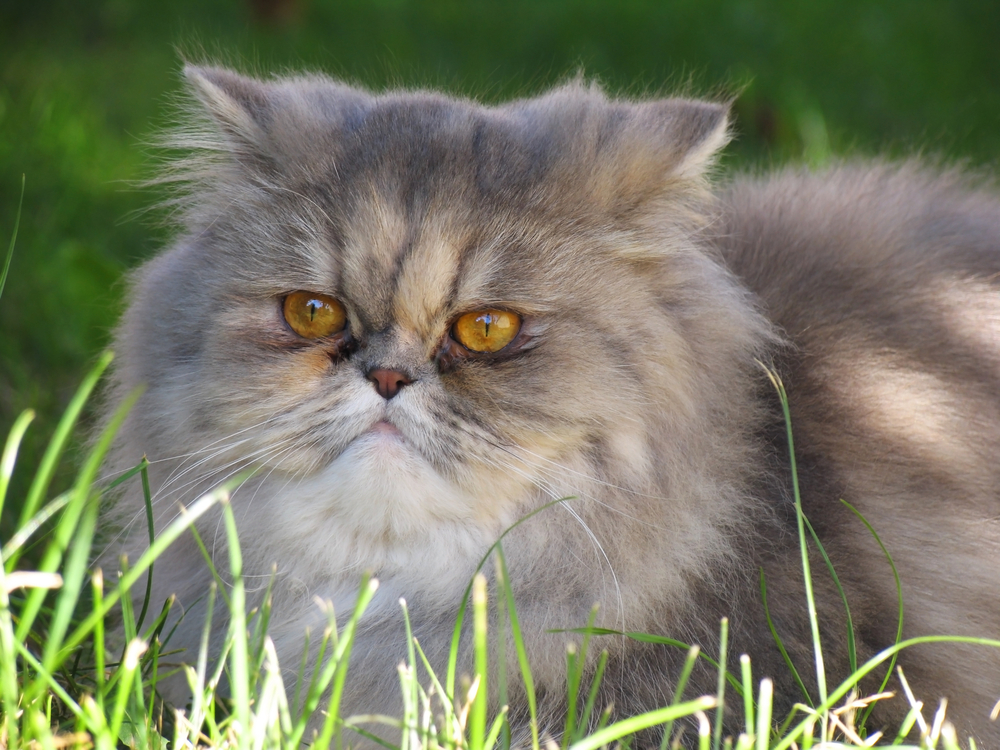
Persians are pretty straightforward – spend hours and hours grooming them, getting rid of mats and tangles, bathing them, and doing everything you can to keep them happy and healthy, and they’ll adore you. They might be a tough crowd to please, but they’re worth the effort.
Grooming your cat’s coat should be a must, but Persian cats require more grooming than the typical moggie. Persians are blessed with luxurious, luscious coats that require daily brushing and combing and weekly bathing.
Brushing might be enough for an average cat, but Persians require combing with a wide-toothed metal comb to avoid mats and tangles. But you need to make sure you’re brushing and combing your cat the right way.
Part your cat’s coat and comb all the way down to the skin to ensure you’re getting rid of everything. Mats and tangles sometimes sneakily form underneath the long layers. That’s why you need to comb your cat’s coat with a metal comb before you brush through the rest of the coat with a soft slicker brush.
Cats and bathing, though? Persian cats require regular bathing because they’re prone to dust and debris getting stuck underneath their coats and because they’re sensitive to skin problems. Persian cats need their faces washed every day because they’re prone to tearing and developing infections.
Getting their nails trimmed and their ears checked out and cleaned regularly is a must, too. Generally speaking, Persian cats aren’t afraid of water, which is a big bonus point.
Due to the difficulty of upkeep, though, you might end up getting your Persian professionally groomed from time to time, too.
Needs

When you’re done grooming your flat-faced feline, you’re free to do whatever you want. Whether you want to snuggle on the sofa and watch your favorite Netflix show or sit by the window and chatter with birds, you’re free to do that with a Persian cat.
We know we talked your ears off with how high-maintenance these fashionable felines are, but that’s not the case when it comes to anything other than grooming.
Persians are sweet and simple, and they’re the happiest when they’re hanging out with you, lying on your lap, or chilling on a Sunday morning. Persians are purrfect for families, too, and they’re more than happy to lie beside (or on top of) everyone.
Patient and predictable, Persians are what every pet parent’s dreams are made of. They’re considered a medium-energy breed. That’s why you can get away with a little window perch rather than a cat tree or a comfortable, cozy apartment rather than a massive mansion.
With a Persian cat, you don’t need to worry about cat equipment and entertainment because they want to keep all four paws firmly on the ground or the couch. They do, however, enjoy playing with cat toys from time to time or going outside to catch butterflies and crawling creatures.
We can’t speak for every Persian cat ever, but these fluffy felines are not known for being rambunctious. Whether that’s something you’re drawn to or not, know that Persian cats are the cutest, cuddliest fashionistas you can get your hands on and they’re more than deserving of getting spoiled.
Read more: Teacup Persian Cats: The Cutest Cuddle Buddy In The World!
Diet and nutrition
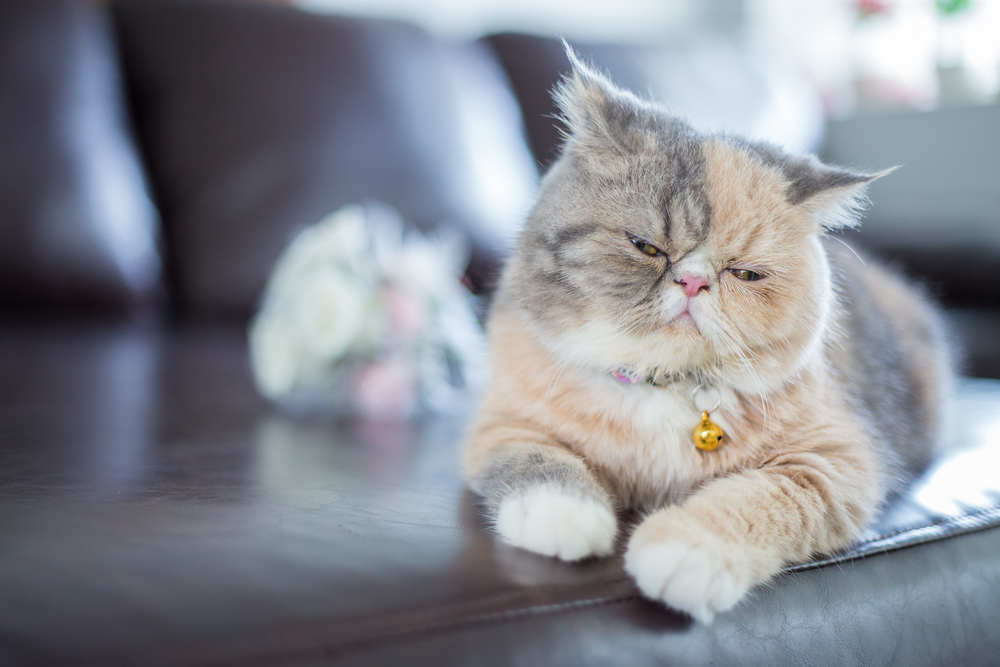
Persians, like all cats, are carnivores. Persian cats need meat, animal protein, and animal fat to survive and thrive, and that’s what most of the food you give them should consist of.
Protein and fat provide your Persian with plenty of energy, help build muscle to make her even bigger and better, ensure the health of her skin and coat, and maintain the health of her organs. Meat and fish are your best bet when you’re trying to provide your Persian with plenty of protein and fat.
Chicken, turkey, beef, salmon, tuna, mackerel, and prawns are all great, but go ahead and experiment with different types of meat and fish.
Fruits and veggies might be a great source of vitamins and minerals, but they’re not necessary for your Persian’s health. Quite on the contrary, some fruits and veggies are harmful to your Persian.
Whether you opt for wet, dry, raw, or homemade food, make sure you consult with your vet and do what’s best for your cat. We’re aware that fat gets a bad rep among humans, but fat provides your cat with crucial fatty acids such as arachidonic acid, linoleic acid, omega-3, and omega-6 acids.
Health
With proper nutrition, physical activity, and quality of life, your Persian cat can be happy and healthy for years and years to come. With that out of the way, though, we do need to mention that Persian cats are susceptible to a number of health niggles and genetic health problems you need to be aware of.
Persian cats can reach a ripe age of 10 to 15 years, but that doesn’t mean that they’ll be healthy the entire time.
They are susceptible to progressive retinal atrophy (PRA) and polycystic kidney disease (PKD). PRA affects the eyes and causes the cells of the retina to deteriorate over time, eventually leading to blindness. PKD, on the other hand, affects the kidneys by causing small, liquid-filled sacs in the kidney to grow and multiply, eventually leading to kidney failure.
Persian cats are genetically predisposed to hypertrophic cardiomyopathy (a disease of the heart), too, and they’re more likely to develop respiratory problems. Reputable Persian cat breeders screen cats for these problems before breeding them to keep them from passing unwanted health problems onto the kittens.
Price
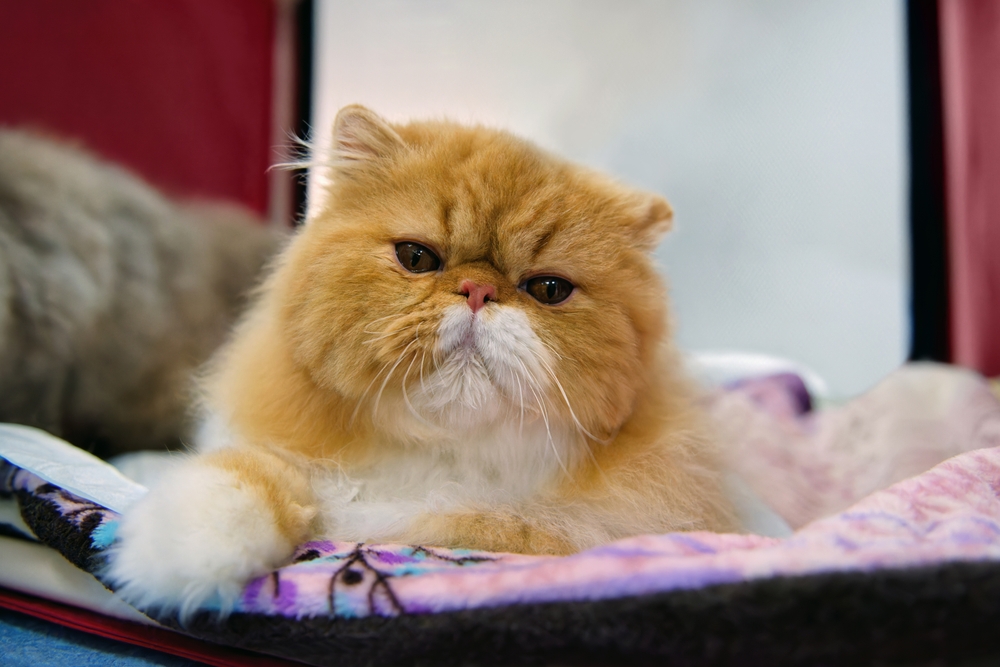
We can’t forget about the numbers, right? Cats with pedigree are guaranteed to hurt the wallet, but they’re worth it when you know you’re getting them from a reputable breeder. When you bite the bullet and decide to get a Persian cat, we recommend keeping your options open.
Persians require time, effort, and energy, and you might want to try to get one for free – check with a reputable breeder whether they’re willing to give you a retired show cat or a breeding cat for free. Maybe they know of someone willing to gift a Persian kitten or an adult Persian cat for free, too.
Checking out animal shelters or rescue centers might be a good option for cutting costs, too. It’s difficult to predict the exact cost, but you can expect to pay anywhere from $75 to $500 when adopting a Persian cat other than from a breeder. It’s a gamble, but it’s worth looking into.
Purchasing a Persian from a reputable breeder, however, is the best way to ensure you’re going home with a happy, healthy, purebred kitty. Prices vary depending on gender, pedigree, quality, coat color, lineage, and age, but you’re probably going to pay anywhere from $1,200 to $1,800.
4 fun facts about the Persian cat guaranteed to snatch your heart
1. Celebrities adore Persians
Persian cats are popular with celebs. Whether that’s because they’re eye-catching or they’re the sweethearts of the cat world, the world might never know. What we do know, however, is that Persian cats were and are adored by members of royalty, historical figures, and famous people alike.
Florence Nightingale, Marilyn Monroe, and Raymond Chandler all owned Persians. Florence Nightingale, for example, owned over 60 cats and was devoted to them till the day she died. Monroe owned a white Persian named Mitsou, and Chandler owned a black Persian named Taki.
2. Show Persians compete across seven divisions
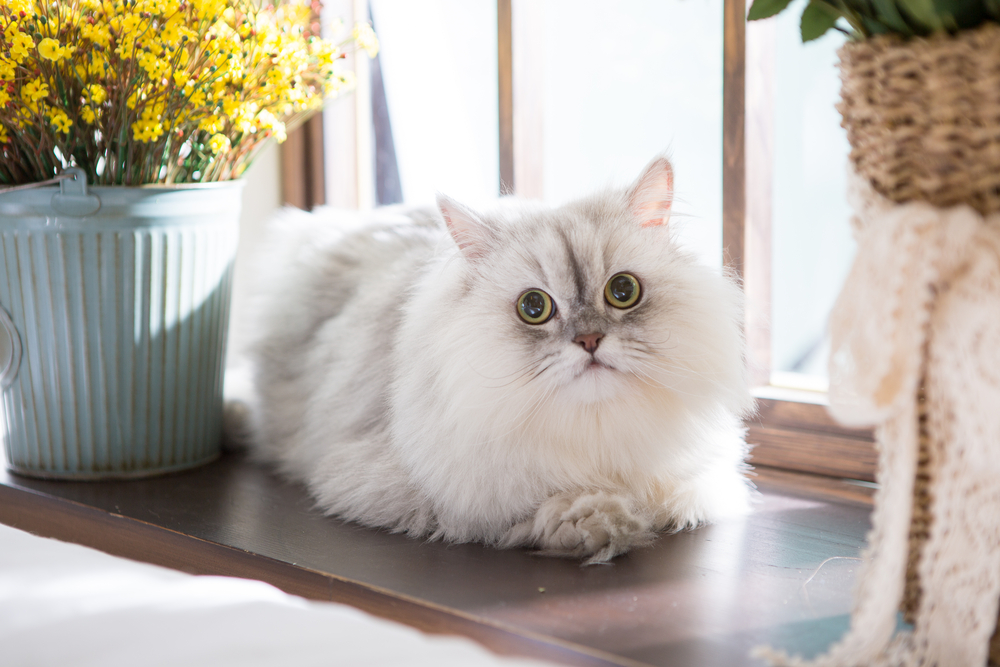
We mentioned beforehand that show Persians or Peke-face Persians differ from traditional ones, but we’ve got more tea for you.
Show Persians are divided across seven divisions, depending on the color and pattern of the coat. The divisions that are allowed to compete are solid, silver and golden, smoke and shaded, tabby, parti-color, bi-color, and Himalayan.
According to the CFA, each division comes with an extensive description ensuring that the competing cats are purebred and up to par with the show’s standards.
3. Traditional Persians didn’t come with the signature flat face
We brushed over the fact that show Persians and traditional Persians don’t share the same signature features – namely, the flat face.
Show Persians or Peke-face Persians came about thanks to breeders in the US, Germany, and Italy during the 1950s with the sole purpose of highlighting the signature flatter faces, smaller ears, rounder heads and bodies, and thicker coats.
Traditional Persians were softer and simpler but were not favored by people who were after the extreme look. The original, doll-face Persian bears similarities to the better-known Peke-face Persian – on top of that, some breeders still select the more traditional profile.
4. Persians are obsessed with petting, grooming, and being bathed
Although many might not dare bathe a cat, Persians aren’t afraid of water. At the end of the day, they are the healthiest when they’re exposed to regular grooming. Brushing and combing get rid of pesky mats and tangles and prevent hairballs.
And, bathing keeps them as smooth as possible, which is something Persian cats appreciate. Adult Persians might be afraid of water when you try to bathe them for the first time, but cats that have been around water from a young age are cooperative – purring is a sign you’re doing something right!
Read more: Are Persian Cats Hypoallergenic? Will They Give You The Sniffles?
